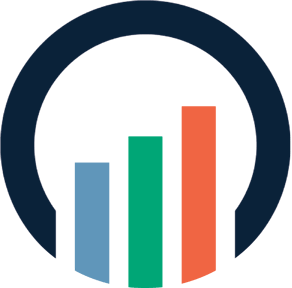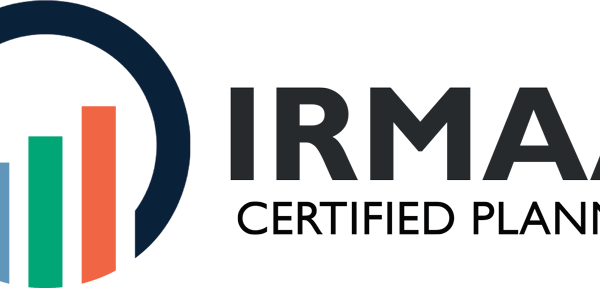you’ve been diligently saving for retirement, planning meticulously to cover your health care costs with Medicare. Then comes a curveball – Part B IRMAA 2023. Suddenly, the cost of staying healthy feels like it’s slipping out of reach.
Like an unexpected plot twist in a well-scripted movie, Part B IRMAA hits higher-income earners with extra charges on their Medicare premiums. It’s that pivotal moment when you realize; your income today shapes your healthcare costs tomorrow.
I know what you’re thinking—how does this even work? Take heart because by the end of our chat, you’ll grasp how these additional fees are calculated and learn about available programs designed to ease up those numbers for folks feeling the pinch. So let’s dive in and tackle this head-on!
Understanding Part B IRMAA 2023
If you’re wrestling with the acronyms of Medicare, like a cryptic crossword that’s seen better days, then let’s tackle one head-scratcher together: Part B IRMAA. Now don’t fret; it’s less intimidating than trying to assemble furniture without instructions. You’ve been paying into Social Security for years, dreaming of serene retirement days ahead. But as 2023 rolls in, so does something called Income-Related Monthly Adjustment Amounts (IRMAA), and it’s eyeing your Medicare premiums.
What Is IRMAA and Who Does It Affect?
You know how at a fancy restaurant they charge extra for sides? Well, think of IRMAA as the side dish no one ordered but high-income beneficiaries still have to pay for on their Medicare bill. This isn’t your standard tip—it’s an added charge determined by income from two years back affecting both Parts B and D premiums.
In fact, while most folks will shell out $164.90 monthly in 2023 for Part B coverage—covering doctor visits and outpatient services—those earning more get hit with higher rates because Uncle Sam believes they can contribute a bit more to the health care potluck.
The Role of Tax Returns in Determining IRMAA
Moving onto tax returns—they’re not just about figuring out if you owe money or are getting some back; they also play matchmaker with your current year’s IRMAA assessment using modified adjusted gross income (MAGI). Think MAGI as being AGI plus any tax-exempt interest tossed into the mix—or simply put: total taxable income after deductions plus other non-taxable bucks made its way onto IRS forms two years ago which now determines if you’ve got an additional date with Mr. Additional Premiums.
This means those nice dinners out or stock dividends enjoyed yesteryear could lead to costlier slices of Medicare pie today—a good reminder that what goes around comes around even in federal healthcare programs.
Impact of Part B IRMAA on Medicare Premiums
Landing smack-dab in premium hike territory thanks to past success is somewhat like getting bumped up from coach class due to frequent flyer status—but instead of free champagne there’s just… well… bigger bills. Higher earners face steeper climbs when looking at their monthly costs compared against those sipping coffee below the top tiers.
For instance, slide over into higher brackets and suddenly that $164.90 seems quaint
Key Takeaway:
Think of Part B IRMAA as the unexpected side dish you pay for based on past income—it ups your Medicare costs if you’re in the high-earner club.
Tax returns from two years ago set the stage for your current IRMAA rates, with higher incomes leading to heftier premiums.
Earning more can mean paying more for Medicare—like an upgrade in a plane where extra legroom means extra cost, not free drinks.
How Is Part B IRMAA Calculated?
you’re at a dinner party and someone asks, “Hey, how does Medicare figure out those extra charges for Part B?” Well, hold onto your napkin because it’s all about the numbers game from two years back. Yep, that tax return you filed way back when is now in the spotlight.
The Role of Tax Returns in Determining IRMAA
Sure as the sun rises, Uncle Sam has his ways to keep tabs on us. For high-income folks facing an Income-Related Monthly Adjustment Amount (IRMAA), it’s your modified adjusted gross income (MAGI) calling the shots. That number pulls together not just what you earned but also adds a sprinkle of tax-exempt interest and other bits and bobs of income to give them their magic formula.
You might wonder why they’re peeking at your financials from two years ago. It’s simple—stability. The IRS needs time to process everything after April 15th rolls around. So for 2023’s assessment? They’re looking at what rolled into your bank account in 2023.
Digging Deeper Into MAGI
If terms like “adjusted gross” or “modified adjusted gross” make you think of some complex wizardry—you’re not alone—but let me break it down real smooth-like:
- Your adjusted gross income? Think of it as your year’s earnings minus deductions—the appetizer course if we stick with our dinner analogy.
- Add to that any non-taxable interest or specific foreign incomes—that dessert plate—and voilà: You’ve got yourself a MAGI.
- This combo meal sets up where you stand with Uncle Sam regarding Part B premiums; more specifically whether or not there’ll be an extra side dish—a monthly adjustment—included with your bill.
Buckle up because here comes some fun facts: Did ya know that in good ol’ 2023, most people are shelling out $164.90 each month for their Medicare Part B? But if you hit the jackpot—or had solid earnings—two years prior (that’s right, they’ve still got eyes on 2023.), then prepare yourself because those monthly dues could jump higher than my Aunt Millie’s blood pressure during bingo night.
Navigating Through Adjustments Based on Your Earnings
Fancy living doesn’t come cheap—even with health care coverage under Medicare. If last week felt pricey getting guac added to your burrito bowl, imagine seeing hundreds more on medical bills that aren’t covered by your plan. That’s why it’s smart to look into supplemental insurance; it can cover those unexpected costs and save you a headache down the line.
Key Takeaway:
When someone asks how Medicare Part B IRMAA is calculated, tell them it’s based on your income from two years ago. The IRS takes a look at that old tax return and uses your modified adjusted gross income (MAGI) to figure out if you’ll be paying extra each month.
If you were making bank in 2023, brace yourself for higher premiums now. But don’t sweat it—there are ways to handle those costs, like getting supplemental insurance to keep those surprise bills at bay.
Impact of Part B IRMAA on Medicare Premiums
Grasping how our salary impacts the amount we spend for Medicare is fundamental, especially as we age and consider healthcare costs. The truth about Part B IRMAA in 2023 is that it’s like a chameleon—it changes based on your financial situation from two years back. If you’ve had a good year financially, brace yourself; you might be paying more for your Medicare premium.
What Is IRMAA and Who Does It Affect?
The Income-Related Monthly Adjustment Amount—or IRMAA—is like an extra slice at the pizza party nobody asked for but high-income beneficiaries get anyway. most folks will pay $164.90 each month for their Medicare Part B in 2023—sounds reasonable right? But if you’re rolling in dough (or were two years ago), Uncle Sam takes notice and tacks on an extra charge because he thinks you can handle it.
This isn’t just pocket change either—the higher your income, the bigger that slice gets. Think of it as being seated at a restaurant where they bring out dishes priced according to what’s in your wallet rather than what’s on the menu—that’s how these income-related monthly adjustment amounts, or IRM-double-A as I call them, work.
The Role of Tax Returns in Determining IRMAA
You may wonder why tax returns from yesteryear are digging into today’s pockets. Well here’s why: Your modified adjusted gross income (MAGI), which includes all those dollars plus some extras like non-taxable interest earnings—and let me tell ya’, there could be plenty—is used by Social Security to decide whether or not you’ll have an additional VIP fee added onto your standard plan costs.
Social Security looks back two years because they figure that gives them enough time to see if any major cash waves hit shore since then. So basically, if past-you did well financially—you know who thanks current-you with this lovely gift called IRAAsurcharge.
Navigating Through Medicare Savings Programs
their healthcare costs. MSPs can assist with covering expenses associated with Medicare Parts A and B. To qualify, your income and resources must meet certain criteria. So don’t let financial worries add to your stress—explore the options available with MSPs that could lighten the load significantly.
Key Takeaway:
Understanding Part B IRMAA is crucial for managing Medicare costs—it shifts with your income from two years ago, potentially hiking up premiums if you had a high-earning year. Don’t overlook this detail.
Your past tax returns dictate today’s Medicare premium through the Income-Related Monthly Adjustment Amount (IRMAA). Higher income equals higher fees, so keep an eye on those old MAGIs.
If soaring healthcare costs have got you down, check out Medicare Savings Programs—they can help cover parts of your expenses based on your current financial situation.
Financial Assistance for Part B IRMAA
Facing the sting of higher Medicare costs due to Income-Related Monthly Adjustment Amounts (IRMAA)? Don’t fret. Help is accessible in a variety of forms. But first, let’s talk turkey about what we’re dealing with here.
Navigating Through Medicare Savings Programs
If you’ve felt the pinch of increased Part B premiums because your income has put you in a bracket where Uncle Sam says you can afford more, know this: assistance isn’t just a fairy tale—it’s real and might be available for you through programs like MSPs. These are not your average bear; they’re designed specifically to lend a hand with those pesky extra charges that come along when your retirement income does too well on paper.
Imagine slashing through the jungle of health care expenses with a machete called ‘Medicare Savings Programs.’ That’s right—these nifty little helpers could cover premium costs, deductibles or even coinsurance amounts that seem determined to take an unwelcome bite out of your wallet. And who qualifies? Well, low-income seniors often hit the jackpot here—but remember—you gotta play to win. So don’t sit back thinking it won’t work for check out if MSP eligibility lines up with yours.
The thing is, some folks believe getting help means jumping through flaming hoops while reciting tax code backwards—not so much. In fact, if filing individual tax returns has ever made you break into hives at just the thought—you’ll be glad to know these savings programs look at income from two years prior as their crystal ball into whether or not they can offer support now.
Moving on past those numbers crunching days gone by… The magic number for 2023 stands tall at $164.90—that’s our standard monthly premium anchor point before IRMAA takes its share based on modified adjusted gross incomes high enough to land beneficiaries in hot water financially speaking without some form of backup plan or life jacket.
You see—the goalpost keeps moving but having knowledge about things like social security benefit details or medicare prescription drug coverage quirks makes navigating this field less intimidating than one might think initially.
Surely no one enjoys paying more than necessary especially when options exist such as Medicare Advantage plans which sometimes throw cost-sharing curves balls depending on how benefits are structured within them versus traditional Medicare Parts A & B dynamics…
So listen closely—if words like ‘medicaid services’ sound alien yet intriguing—or phrases such as ‘medicare savings’ cause eyes glazed over previously start focusing sharp suddenly—there may be good reason why exploring deeper into what financial rescue ropes exist could end being quite beneficial. Navigating the maze of healthcare funding can uncover ways to save money and secure better care, so it’s worth taking a closer look.
Key Takeaway:
Feeling the pinch from Part B IRMAA? You’re not alone. But there’s good news—Medicare Savings Programs (MSPs) might just be your financial lifeline, potentially covering premiums and other costs. Check if you qualify; it could save you a bundle without the headache of complex paperwork.
Changes in Part B Premiums and Deductibles Over Time
Talking dollars and cents, Medicare Part B has been quite the roller coaster. So grab your financial planner hat because we’re looking at how premiums and deductibles have shifted faster than a chameleon on a rainbow.
What Is IRMAA and Who Does It Affect?
The plot twist in our story is the Income-Related Monthly Adjustment Amount—IRMAA for short. Picture it as that extra charge that tags along with high earners’ monthly premiums like an uninvited plus-one to an exclusive party. The standard premium sits pretty at $164.90 this year, but if you’ve had some good fortune rolling in, Uncle Sam’s going to want a bigger slice of that pie.
Buckle up. We’re not just talking about any old income here; we mean modified adjusted gross income (MAGI), which could include everything from your adjusted gross income to those tax-exempt bonds you thought were so slick—and even certain untaxed foreign earnings if you’re globetrotting with your finances.
The Role of Tax Returns in Determining IRMAA
Let’s rewind two years back—your MAGI from then decides whether you’ll be paying more now for being well-off then. Sounds fair? That’s debatable, but it sure makes checking those past tax returns as crucial as finding Waldo when planning out your health care expenses.
You might think there’s no escaping IRMAA once she sets her sights on you—but hold up. There are ways around this sneaky surcharge through things like life-changing events or errors on the IRS part—which means keeping meticulous records pays off more than scoring front-row tickets to Broadway’s hottest show.
Impact of Part B IRMAA on Medicare Premiums
If Lady Luck smiled upon you financially these past few years, prepare yourself: Your monthly premiums might get bumped up considerably thanks to our friend IRMAA again—she really gets around.
Did someone say higher premiums? Yes indeed—you could find yourself doling out more dough each month based solely on where your income lands on the spectrum.
Navigating Through Medicare Savings Programs
Say hello Medicare Savings Programs (MSP), also known as “financial knights” ready to joust away some of those pesky costs for seniors who fit into their armor—that is low-income brackets.
- MSP eligibility requirements can seem tighter than last year’s jeans after holiday feasting,
- Potential savings will make budget-conscious hearts sing louder than ever, providing a financial melody that resonates with savvy spenders.
Key Takeaway:
Medicare Part B’s costs can swing like a pendulum, with IRMAA playing gatekeeper for high earners. Your income from two years ago sets the stage for today’s premiums—so keep those tax records straight. And don’t worry, there’s hope yet: MSPs might just be your financial hero if you’re pinching pennies.
FAQs in Relation to Part B Irmaa 2023
What is the Medicare Part B IRMAA for 2023?
The 2023 IRMAA adds extra charges to standard premiums if your income exceeds certain thresholds.
What are the income limits for Medicare Part B for 2023?
Your modified adjusted gross income determines where you land on the scale, affecting how much more you’ll pay.
What is the IRMAA amount for Part B?
This varies by your earnings but expect an uptick in monthly costs that can stretch into hundreds of bucks.
What is the MAGI limit for 2023?
MAGI brackets start shifting northward at $97,000 for singles and $194,000 if married and filing jointly this year.
Conclusion
Now you’ve got the lowdown on Part B IRMAA 2023. Remember, your income matters when it comes to Medicare costs. Those extra charges can sting, but they’re not set in stone.
Keep this in mind: tax returns from two years back set the stage for your premiums today. Your MAGI is key—knowing how it’s pieced together can save you some hassle down the line.
Dig into those financial help programs if IRMAA pinches too hard; they’re there for a reason. Programs like MSPs might just be the lifeline you need.
Sure, navigating healthcare costs isn’t simple—especially with added fees—but now you know what drives them and how to cushion the blow.
Streamlining the Medicare Surcharge Calculation Process.
Our Healthcare Retirement Planner software is designed to streamline the retirement planning process for financial professionals. By providing an efficient way to calculate IRMAA costs, our tool helps you save time and focus on other aspects of your clients’ retirement plans.
- Faster calculations: Our software quickly calculates IRMAA costs based on your client’s income and tax filing status, eliminating manual calculations and potential errors.
- User-friendly interface: The intuitive design of our platform makes it easy for financial professionals to input data and generate results with minimal effort.
- Data integration: Seamlessly integrate our calculator into your existing financial planning tools or CRM systems for a more streamlined workflow.
- Easy to Understand Reports: Export reports to easily share with your clients
- Tax and Surcharge Modeling: see how different types of income affects both taxes and your surcharges.
In addition to simplifying the calculation process, using our Healthcare Retirement Planner can also help improve communication between you and your clients. With clear visuals that illustrate how IRMAA costs impact their overall retirement plan, you can effectively convey complex information in an easily digestible format. This enables clients to make informed decisions about their healthcare expenses during retirement while ensuring they are prepared for any potential changes in Medicare premiums due to income fluctuations. To learn more about how our software can benefit both you as a financial professional and your clients’ retirement planning experience, visit the features page. Streamlining retirement planning processes can help financial professionals save time and resources, allowing them to focus on other areas of their clients’ needs. Automated calculation of IRMAA costs is the next step in streamlining this process even further.






